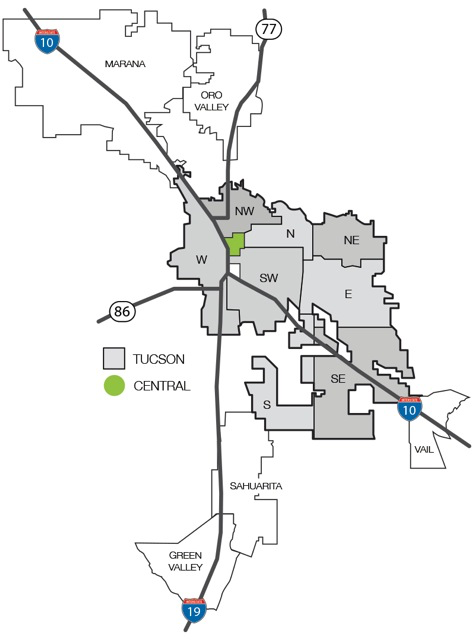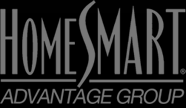What to do Upon Taking Ownership
Purchasing a property in Tucson, AZ is quite exciting. Tucson's Sonoran Desert, Mountain Ranges, The University of Arizona, and many other amenties await you and your family. I'd love to work with you to help you find the perfect home that suits your needs and wants. Tucson-area properties for sale are quite diverse. There's something for everyone. Every property I sell comes with a 1 year Home Warranty at no cost.
If one's thinking of selling a Tucson-area property, please let me share my marketing plan with you. It works!
NEW HOMEOWNER SAFETY CHECKLIST
Congratulations on the purchase of your new home! Now that you’ve moved in, you may want to consider the following home safety tips and suggestions to make your new house your home.
- Doors - Change the locks on all exterior entrances for improved security. Make extra set of keys.
- Windows - Check that all windows and doors are secure. Improve window hardware as necessary. Security rods can be added to sliding windows and doors.
- Review Possible Tripping Hazards - Undertake improvements to all stairways, decks, porches, landings, driveways and walkways where there is a risk of falling or stumbling. Examine interior for loose or torn carpeting and flooring. Undertake repairs where necessary.
- Smoke Detectors - Install smoke detectors on each level of the home. Ensure that there is a smoke detector outside all sleeping areas. Replace batteries on any existing smoke detectors and test them. Make a note to replace them in a year.
- Fire/Earthquake Evacuation Plan - Create a plan of action in the event of a fire or earthquake in your home. Ensure that there is an operable window or door in every room of the house. Provide rope or ladders on upper stories if there is no fire escape.
- Visit www.redcross.org for detailed information.
- Fire Extinguisher - Purchase a general-purpose fire extinguisher for each floor of the home plus one small kitchen extinguisher for grease fires.
- First-Aid Kit - Keep first-aid materials and a manual in an accessible location.
- Household Tools - Consider filling a toolbox with the basic tools to help you with normal home maintenance chores. Include: ■ Hammer ■ A variety of nails ■ Picture wire ■ A variety of screws and nuts ■ Flathead and Phillips screwdrivers ■ Pliers ■ Plumbers wrench ■ Electric drill with drill and screwdriver bits ■ Ratchet set ■ Small wood saw ■ Duct tape ■ Flashlight ■ WD 40 ■ Clean cotton “shop” rags ■ Toilet plunger ■ Tape Measure ■ Caulk and caulking gun
AROUND THE HOUSE…KNOW YOUR VALVES!
Furnace - Where is it? What kind of fuel does it use? How often do you have to clean or replace the filters? Where do you get new filters? If it’s an oil furnace, when do you need to refill it and whom do you call? If it goes out, who do you call to repair it? Can you get a maintenance contract? Where’s the reset button? Does it have a fan to cool the house in the summer?
Water heater - Does it have a pilot light? What if it goes out—how do you relight it? How do you set the temperature? What temperature should you set it to?
Fireplace & Flu - Be sure to have it cleaned every 1 to 3 years, depending on how often you use your fireplace. Avoiding it can cause the chimney not to draw well (you’ll notice that smoke stays in the room instead of going out) or can ultimately cause a chimney fire.
Shut-Off Valves
Review the location of all of the shutoff valves and how to turn them off with all your family members so you’ll be prepared for emergencies.
■ Gas shutoff valve: Locate and show entire family how to turnoff.
■ Electrical Panel/Breaker box: Label main circuit breaker and show entire family how to shut off main breaker in an emergency, or flip any circuits back on after an overload.
■ Whole-house water shutoff valves: The main shutoff should be beside the meter if you are on City water. If you use a well, the shutoff will be on the house side of the pressure tank. You should also know how to cut power to the tank.
■ Whole-house hot water shutoff: There should be a valve on the hot water outlet of the water heater, which controls all of the hot water to the house.
■ Toilet shutoffs: Show your entire family how to shut off the toilet by turning the ribbed oval handle under the tank if it ever starts to overflow.
■ Sink shutoffs: You should have handles beneath the sinks or within the cabinets; the one on the left is usually for hot water, the one on the right for cold.
■ Dishwasher shutoffs: Look under the kitchen sink for a reducer coupling and shutoff valve leading to the dishwasher on the 1/2” inch hot water sink supply line.
■ Washing machine: Valves are usually where the washer hoses meet the house supply lines. However, washer hoses are notoriously weak, so consider changing them routinely every year or at least close the valves when leaving home for an extended period.
SAFETY TIP
Pilot Lights
Many older gas appliances and most water heaters have a small, continuously burning gas flame—the pilot light—that ignites the main burner. Some newer models have electronic igniters.
To be safe, you should:
■ Know which of your appliances have a pilot light.
■ Know how to relight any pilot lights following the appliance manufacturer’s instructions. If needed, call your local utility company for assistance.
■ Know where the instructions are. Often, basic relight instructions are located inside the main burner compartment door.
■ If you cannot relight the pilot light yourself, call your local utility company and ask for assistance.
For Professional Property Buyer and Seller Representation call, text, or email Gregory Richman, Realtor at any time. Evenings and weekends are fine.
Other blog entries
• Green Acres Estates, Tucson, Arizona (04/16/2024)• Looking For Relief? Chill Acupuncture And Wellness (04/15/2024)
• Classy Menu, Classy Service: Blue Willow Restaurant (04/09/2024)
• An Antique Dive Bar: The Buffet Bar (03/07/2024)
• Orangewood Estates - A Lovely, Older, NW Tucson Neighborhood (03/05/2024)
• Neighborhood Saloon: Nancy’s Boondocks (03/02/2024)
• Food Court Without The Mall: American Eat Co (02/15/2024)
• Highest Rated Tucson Ebike Dealer: Pedego Tucson (02/10/2024)
• Horror Flick Food: Serial Grillers (02/08/2024)
• Street Tacos and More: Calle Tepa Mexican Street Grill (01/30/2024)
» Blog archive
Click on Map to Start Your Tucson Home Search



